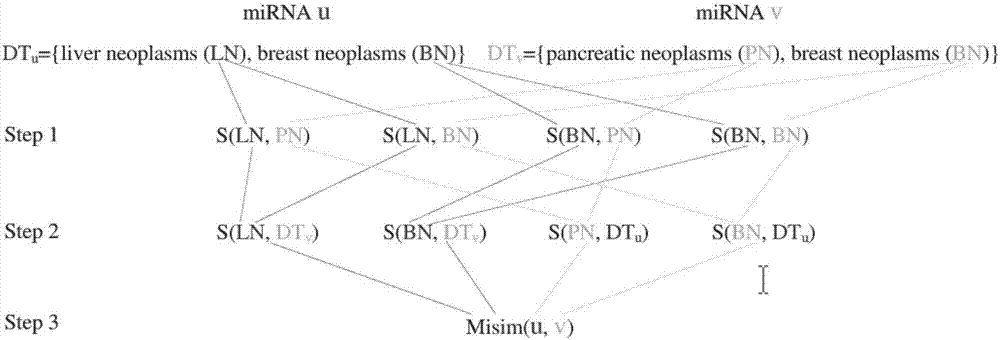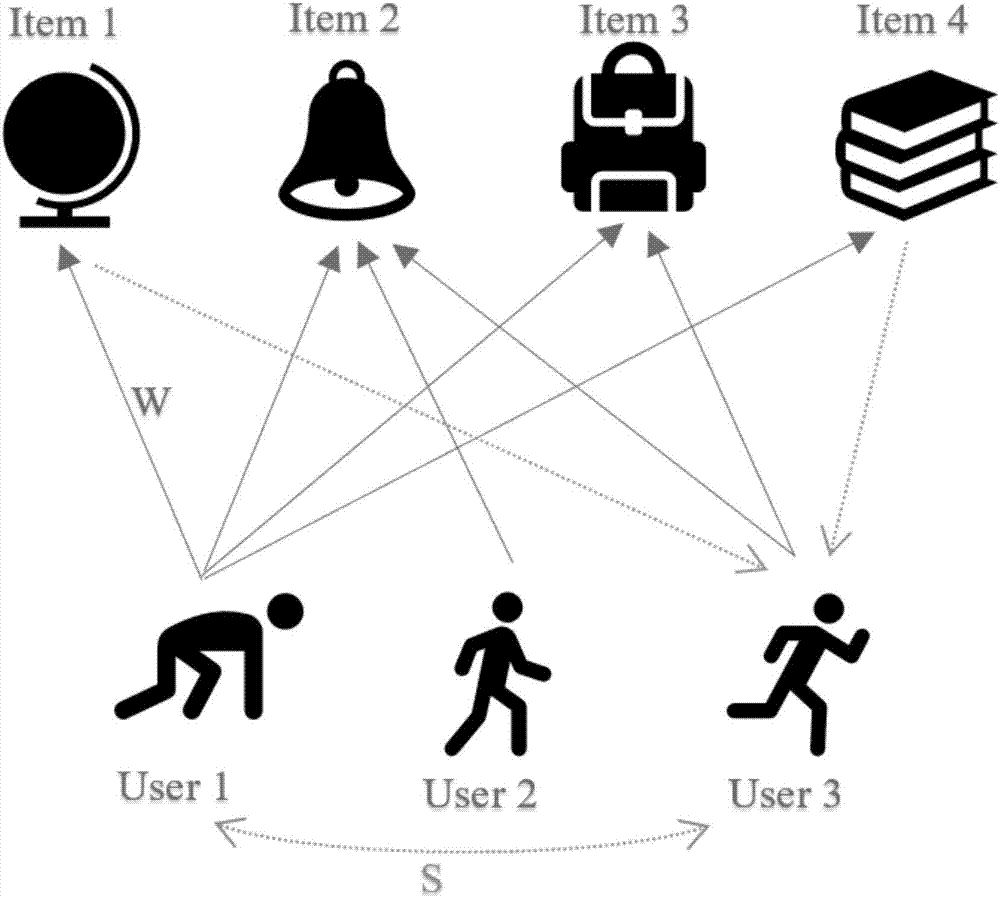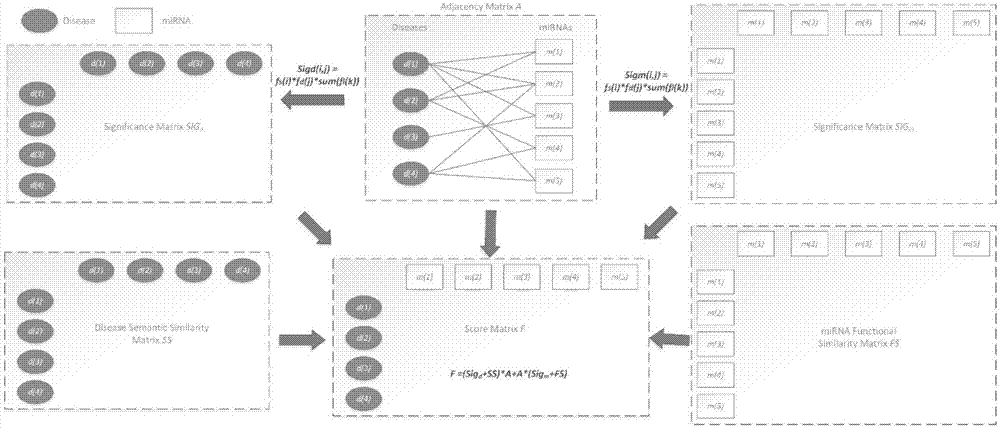Improved miRNA-disease relevance prediction method based on collaborative filtering
A technology of collaborative filtering and prediction method, which is applied in the field of human life and medical engineering, and can solve the problem that the parameter K is not easy to choose.
- Summary
- Abstract
- Description
- Claims
- Application Information
AI Technical Summary
Problems solved by technology
Method used
Image
Examples
Embodiment 1
[0100] (1) Database analysis:
[0101] We performed global LOOCV, local LOOCV and FFCV with the HMDD database for evaluation on ICFMDA. To evaluate the performance of ICFMDA, we use five state-of-the-art methods for comparison. They are HGIMDA, RLSMDA, HDMP, WBSMDA and RWRMDA. In LOOCV, each known miRNA-disease association is sequentially picked as a test sample, while others are used as training samples. All untested associations are used as candidate samples. In local LOOCV, test samples are ranked among candidate samples for the disease they belong to, while in global LOOCV, all candidate samples are ranked. If the ranking of the test sample is not lower than the given threshold, the prediction is considered true. If the candidate sample's rank is not lower than a given threshold, the prediction is considered a false positive. Receiver operating characteristic (ROC) curves were plotted by calculating the true positive rate (TPR) versus the false positive rate (FPR) at ...
PUM
 Login to View More
Login to View More Abstract
Description
Claims
Application Information
 Login to View More
Login to View More - R&D
- Intellectual Property
- Life Sciences
- Materials
- Tech Scout
- Unparalleled Data Quality
- Higher Quality Content
- 60% Fewer Hallucinations
Browse by: Latest US Patents, China's latest patents, Technical Efficacy Thesaurus, Application Domain, Technology Topic, Popular Technical Reports.
© 2025 PatSnap. All rights reserved.Legal|Privacy policy|Modern Slavery Act Transparency Statement|Sitemap|About US| Contact US: help@patsnap.com



